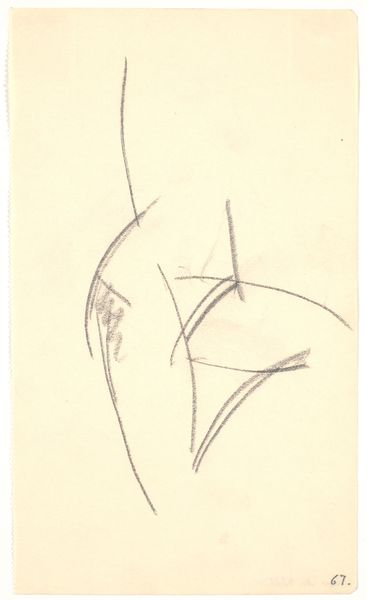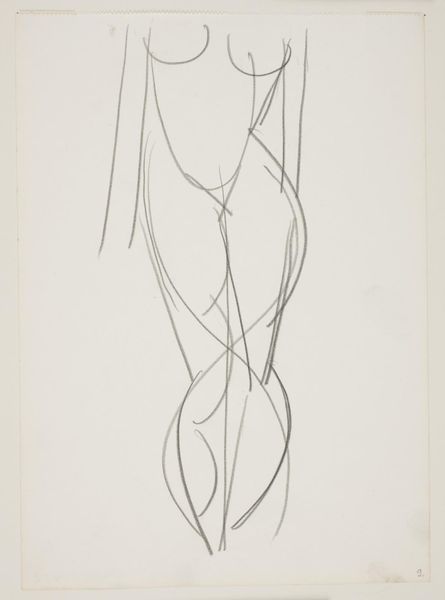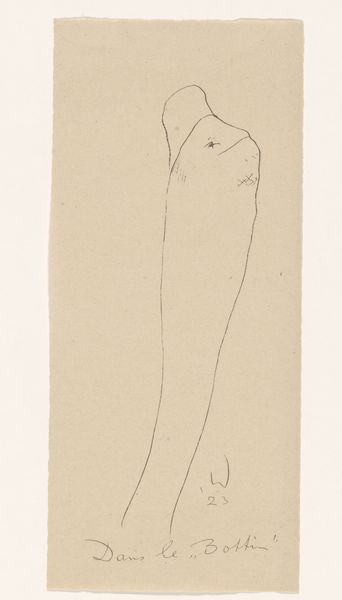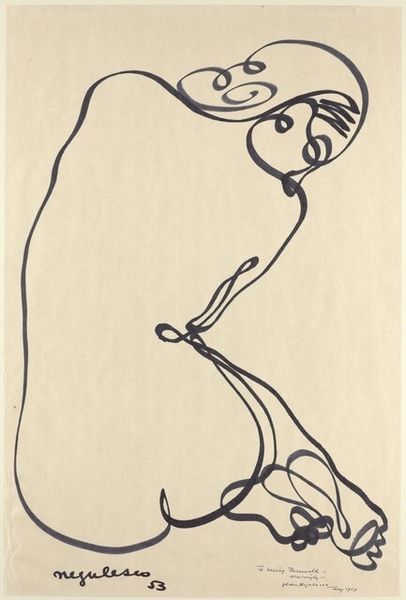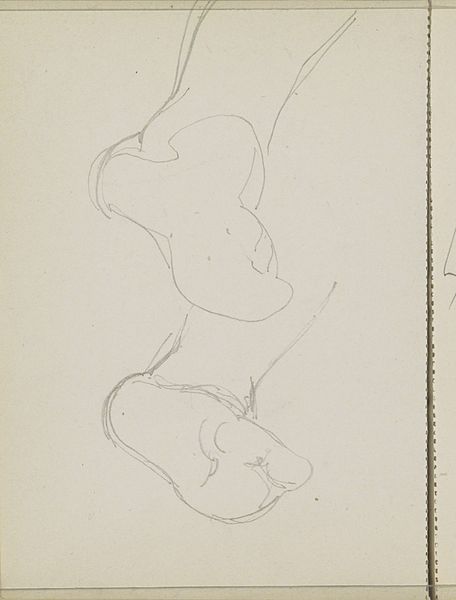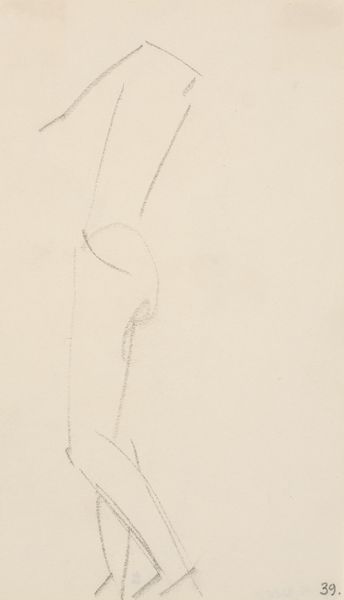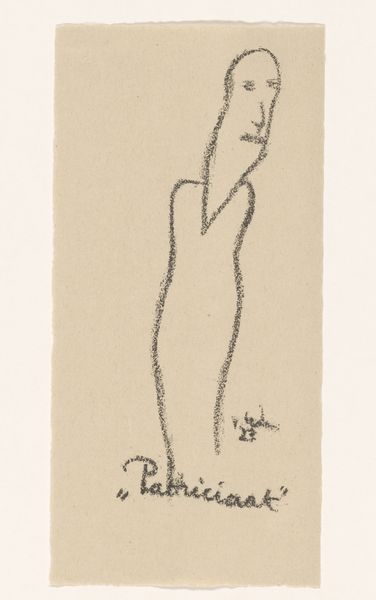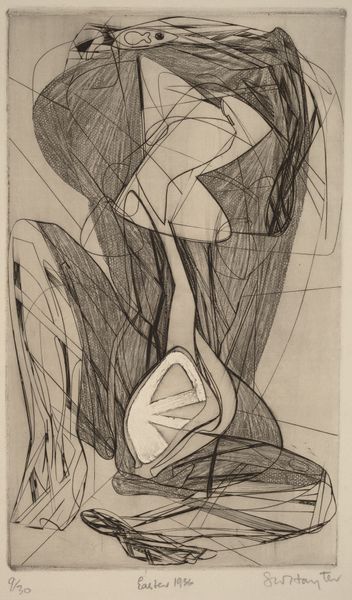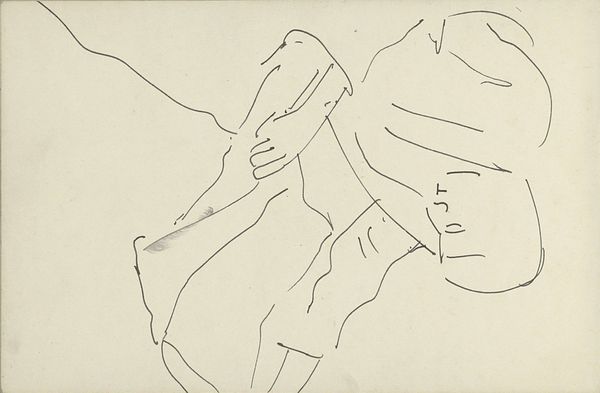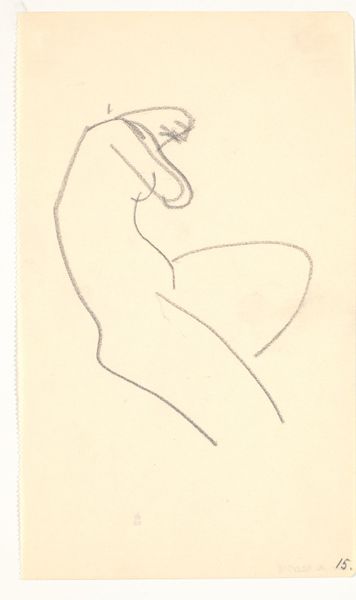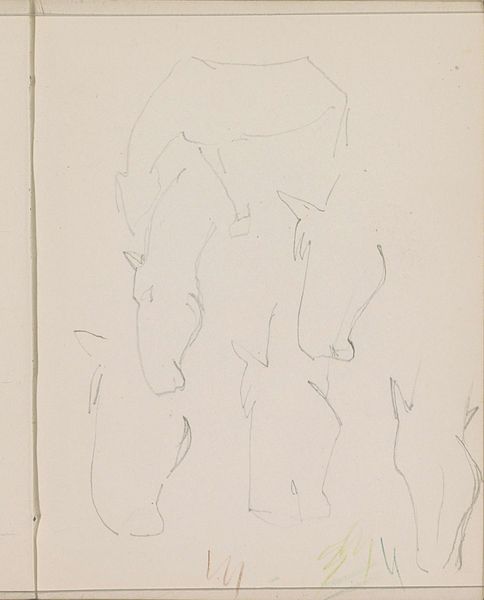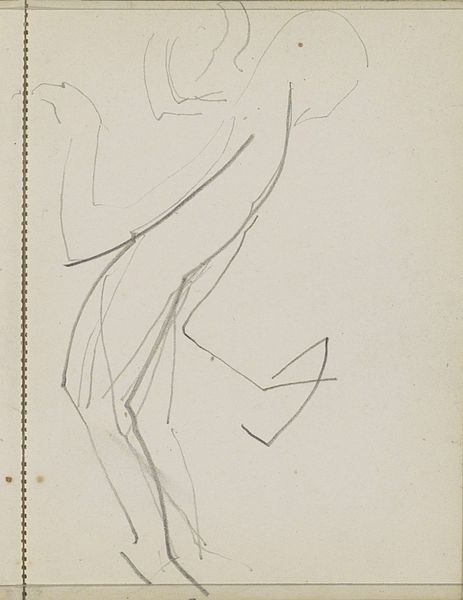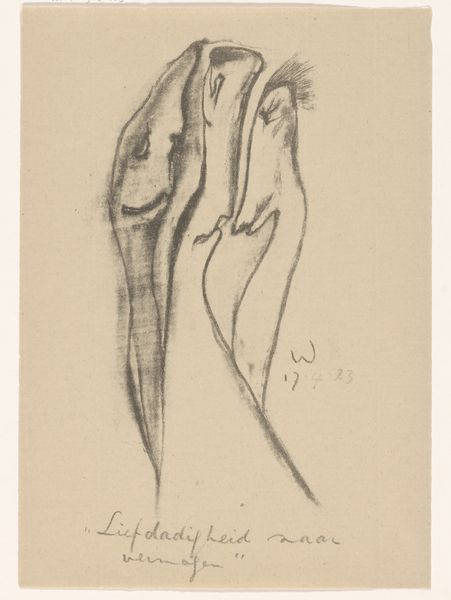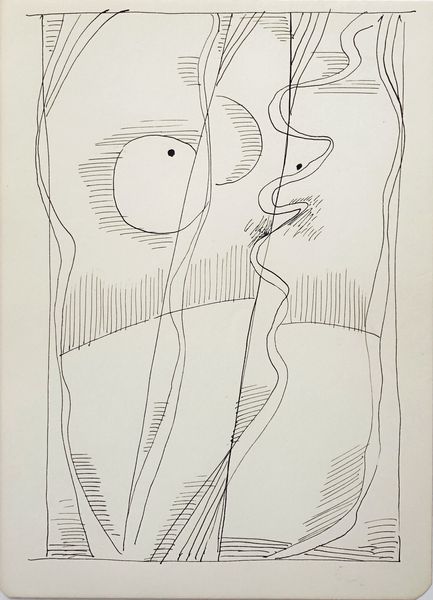
drawing, pencil
#
drawing
#
abstract
#
pencil
#
abstraction
#
nude
#
modernism
Copyright: Public Domain: Artvee
Curator: This drawing by Mikuláš Galanda, entitled "Shadow," dates to 1930. Executed in pencil, it offers an enigmatic interplay of form and representation. What's your initial response to this work? Editor: Austere, definitely. Stark, almost to the point of being unsettling. It reminds me a bit of medical illustration, which isn't necessarily a comfortable association. The floating nude form also reads as surreal in this rigid geometric frame. Curator: I see what you mean about medical illustration, but I would add that Galanda's art is very steeped in archetypes, ancient and religious symbology and a certain amount of visual metaphor. I think here, that shadow suggests not just the ephemeral but the idea of our truest forms, reflected from another world. It speaks to the enduring idea of the muse. Editor: An interesting perspective! I am not sure about the idea of muses. For me, the framework – the geometric structure encasing the organic figure - creates a sense of constraint. Women throughout history have been constantly scrutinized and regulated in ways that control their bodies and visibility. This resonates powerfully, making the "Shadow" less a representation of the ideal and more an interrogation of imposed boundaries. Curator: But there's a softness, even vulnerability, in the curves, too, don't you think? Note the texture on the figure. The figure in opposition to the sharp lines that confine it seems to invoke the timeless struggle to embody truth when external, manufactured forces deny an individual's nature. Editor: Maybe so, but who is allowed that softness? Whose truths are prioritized and valued? By removing the figure from a realistic social landscape, Galanda seems to be playing with universal ideas that feel strangely devoid of an historical one. As an activist, I can't ignore how representation works or who can use these abstractions. Curator: Perhaps. But Galanda was attempting to reach a broader, almost primal, understanding of human essence, drawing from sources beyond immediate political and social confines. Regardless, his “Shadow” allows multiple interpretations, doesn't it? A conversation we are all still working on now. Editor: Yes, still ongoing, still pressing. I appreciate art that allows a multilayered reflection of the complexities within both art history and culture as a whole.
Comments
No comments
Be the first to comment and join the conversation on the ultimate creative platform.
